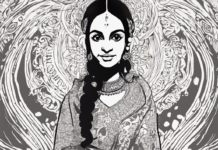Gender identities have long been viewed through a binary lens, with society categorizing individuals as either male or female based on their biological sex. However, gender is a complex and multifaceted concept that transcends this binary view. Gender identity refers to a person’s deeply held internal sense of their gender, which may or may not align with the sex they were assigned at birth.
Breaking the Binary
In recent years, there has been a growing recognition and acceptance of gender identities that fall beyond the traditional male-female binary. This shift has been fueled by the visibility and advocacy of the LGBTQ+ community, as well as advances in gender studies and activism. Let’s explore some of the diverse gender identities that exist outside the binary:
1. Non-Binary: People who identify as non-binary do not exclusively identify as male or female. They may feel that their gender identity is a mix of both genders, neither gender, or something entirely different.
2. Genderqueer: Genderqueer individuals may reject traditional gender categories altogether or feel that their gender identity is fluid and can change over time.
3. Genderfluid: Those who identify as genderfluid may experience shifts in their gender identity, moving between different gender identities at different times.
4. Agender: Agender individuals may feel a lack of gender identity altogether or feel that their gender identity is neutral.
5. Bigender: Bigender individuals may identify as two genders simultaneously or move between two gender identities.
6. Androgynous: Androgynous individuals may have a gender expression that is a mix of male and female characteristics or may reject traditional gender norms in their appearance and behavior.
The Importance of Gender Diversity
Embracing gender diversity is vital for creating a more inclusive and equitable society. It is essential to recognize that gender is a spectrum, and individuals should have the freedom to express their gender identity authentically. By breaking free from the constraints of the gender binary, we can challenge harmful stereotypes and promote acceptance and respect for all gender identities.
Navigating Pronouns and Language
Respecting gender diversity also involves using inclusive language and honoring individuals’ chosen pronouns. It is crucial to ask people for their pronouns rather than assuming based on their appearance. Some common gender-neutral pronouns include “they/them/theirs,” “ze/zir/zirs,” and “xe/xem/xyrs.” Using the correct pronouns demonstrates respect for a person’s gender identity and helps create a more inclusive environment.
Supporting Gender Diversity in Society
As a society, we can take several steps to support and affirm gender diversity:
1. Education: Providing education and raising awareness about different gender identities can foster understanding and acceptance.
2. Creating Inclusive Spaces: Ensuring that all spaces – whether it’s schools, workplaces, or public facilities – are inclusive and welcoming to individuals of all gender identities.
3. Advocacy: Supporting policies and initiatives that protect the rights of gender-diverse individuals, such as anti-discrimination laws and healthcare access.
4. Amplifying Voices: Amplifying the voices of gender-diverse individuals and centering their experiences in discussions about gender identity and equality.
5. Challenging Norms: Challenging traditional gender norms and stereotypes that perpetuate harmful attitudes towards gender diversity.
Frequently Asked Questions (FAQs)
Q1: What is the difference between gender identity and sexual orientation?
A: Gender identity refers to a person’s internal sense of their gender, while sexual orientation refers to the gender(s) to which a person is attracted romantically, sexually, or emotionally.
Q2: Can a person’s gender identity change over time?
A: Yes, for some individuals, their gender identity may evolve or change throughout their lives. It is essential to respect a person’s self-identified gender identity, regardless of any changes.
Q3: How can I be a better ally to gender-diverse individuals?
A: Listen to and respect individuals’ gender identities, use inclusive language, educate yourself about gender diversity, and advocate for inclusive policies and practices.
Q4: Is non-binary a new concept?
A: Non-binary identities have existed across various cultures and throughout history. The increased visibility and recognition of non-binary identities in recent years have brought more awareness to this gender identity.
Q5: Are there specific challenges that gender-diverse individuals face in society?
A: Gender-diverse individuals may face discrimination, lack of legal recognition, barriers to healthcare, and social stigma. It is essential to address these challenges and work towards creating a more inclusive society for all gender identities.
In conclusion, embracing gender diversity and breaking free from the binary are essential steps towards creating a more inclusive and affirming society. By recognizing and respecting the diverse ways in which people experience gender, we can foster a more equitable and accepting world for all individuals, regardless of their gender identity. Let’s continue to challenge traditional norms, advocate for equality, and celebrate the rich tapestry of gender identities that make up our diverse human experience.









